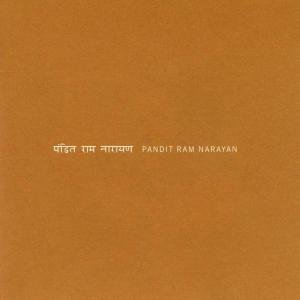 Pandit Ram Narayan was born in 1927 in Rajasthan, the fifth generation of a family of musicians. At the age of seven he began formal training on the sarangi, a bowed string instrument traditionally played to accompany singers. Narayan was the first to perform the sarangi as a solo instrument; initially meeting with a less than enthusiastic reception, he persevered, adapting the sarangi and bow to meet his own demands as a soloist. After several years of experimentation and public performance, he became an overnight sensation in 1957, and an acknowledged master of Indian art music. This recording of the Raga Puria-Kalyan presents him in top form.
Pandit Ram Narayan was born in 1927 in Rajasthan, the fifth generation of a family of musicians. At the age of seven he began formal training on the sarangi, a bowed string instrument traditionally played to accompany singers. Narayan was the first to perform the sarangi as a solo instrument; initially meeting with a less than enthusiastic reception, he persevered, adapting the sarangi and bow to meet his own demands as a soloist. After several years of experimentation and public performance, he became an overnight sensation in 1957, and an acknowledged master of Indian art music. This recording of the Raga Puria-Kalyan presents him in top form.
The alap is provided in a rendering that is difficult to describe without seeming to contradict oneself: it is somehow both dry and sinuous, lyrical and astringent, sensuous and tough, approaching in some sections the feeling one might find in the music of Alban Berg or the late quartets of Dmitri Shostakovich, although worlds away in history and intent. This is, in all actuality, a recording that will be easy to digest for those used to the demands of the twentieth-century avant-garde, particularly as it has manifested in chamber music – it has that same intimacy, the same sense of a good talk with a close, hard-nosed friend ranging over potent and challenging ideas. Narayan’s performance of this section is sensitive, thoughtful, tremendously absorbing, and in places achingly beautiful. Although it is nearly twenty-five minutes in duration, this listener, at least, never lost interest.
After the alap, the gat in vilambit teental provides a few moments of transition before the listener is sucked into Narayan’s variations over the complex rhythms provided by Suresh Talwalker on tabla and Hans Isgren on tamboura. This section, however, does not quite go all the way, brushing intensity and then drifting back to a state that seems like a cat at rest – relaxed but alert, and ready for anything. The Gat in drut Teental picks up the tempo and the intensity – this is where the “anything” happens. I can only describe Narayan’s reading of this as a series of spectacular, rippling glissandi over a complex, shifting rhythm that seems to know no limits. Coming after the long, low-key intricacies of the alap and vilambit Teental, it’s really breathtaking.
If there is going to be a bridge between Eastern and Western music, this is a good candidate. It’s a tremendously absorbing disc, recorded by an influential master at the top of his form, that somehow closes the gap between two very different traditions without ever sacrificing purity or intelligibility. It is just awesome.
(Amigo Musik, 1999)
